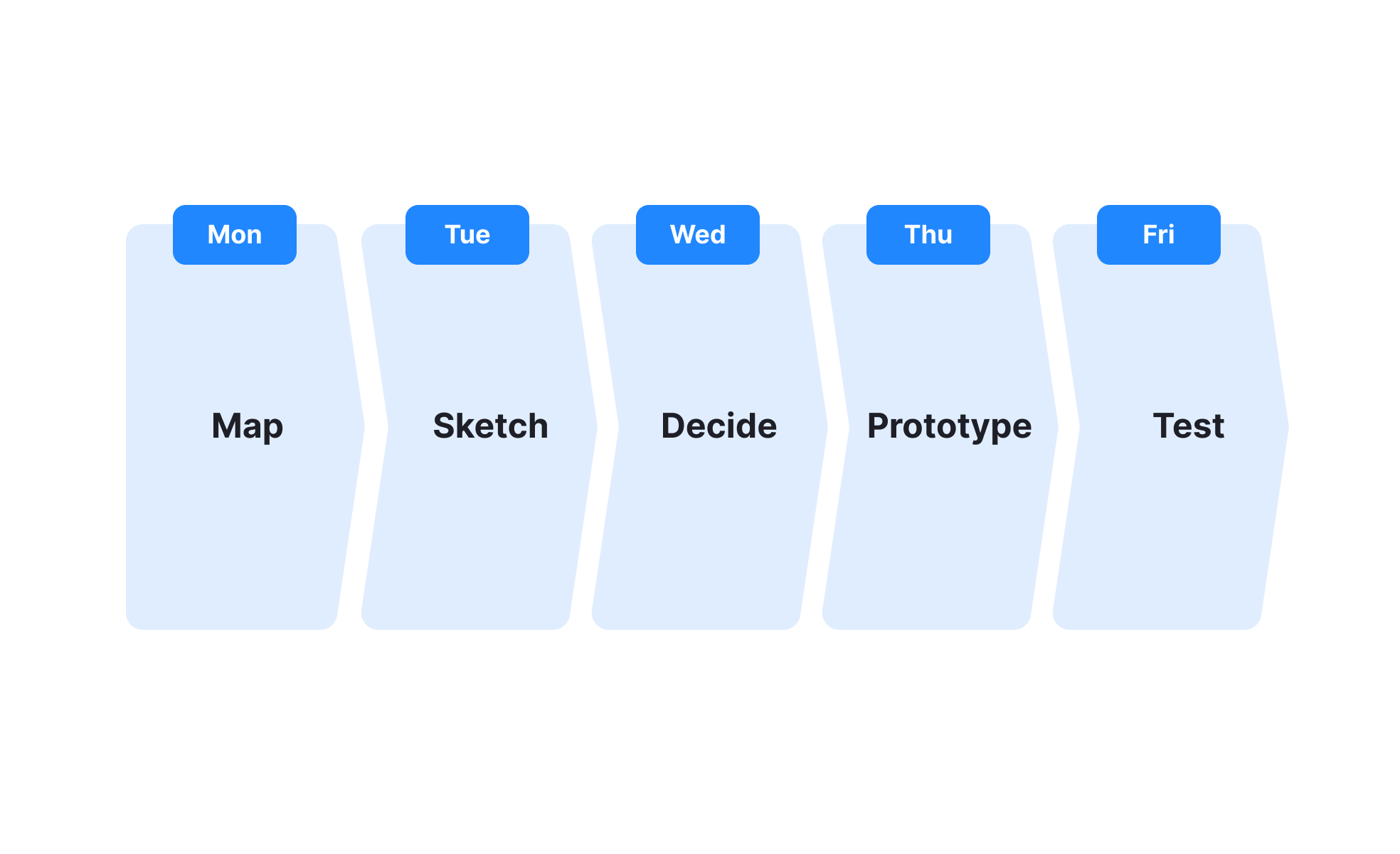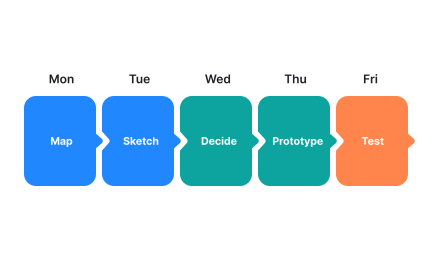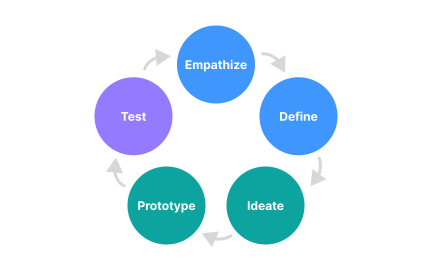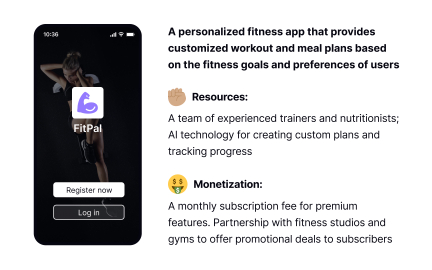Design Sprint
A design sprint is a time-boxed process for rapidly solving problems, testing ideas, and validating solutions with users before investing in full development.

A design sprint compresses months of work into a few days. Originally developed at Google Ventures, it provides a framework for rapidly exploring problems, generating solutions, and testing them with users. The goal is to reduce risk by validating ideas early.
The process typically runs five days. Day one defines the problem and sets goals. Day two explores possible solutions. Day three selects the strongest ideas and builds a prototype. Day four tests the prototype with users, while day five analyzes findings and decides next steps.
For UX/UI design, sprints provide structured opportunities to explore creativity without getting stuck in endless cycles. By setting strict timelines, teams focus on what matters most, avoiding overthinking.
For product management, design sprints reduce uncertainty. Instead of committing resources to untested ideas, managers use evidence from sprint testing to make informed decisions. This improves efficiency and increases the likelihood of success.
Examples from startups and enterprises demonstrate their value. Slack used design sprints to refine onboarding flows, increasing adoption. Large corporations like Lego have applied the method to rethink physical and digital products alike.
Sprints also encourage collaboration. Designers, engineers, product managers, and stakeholders work together intensively. This creates alignment and builds shared understanding, reducing friction later in development.
Learn more about this in the Design Sprint Exercise, taken from the Design Processes & Research Methods Lesson, a part of the UX Design Foundations Course.
Key Takeaways
- Design sprints validate ideas quickly.
- Condense months of work into days.
- Provide evidence before full development.
- Encourage collaboration across disciplines.
- Applied in startups and enterprises.
- Reduce risk and improve efficiency.
Sprints work best for big, unclear problems or new ideas that carry risk. They allow teams to explore solutions without heavy investment. For example, testing a new feature concept in a sprint prevents wasted effort on full development if it fails.
They are less suited for small, well-defined issues that can be addressed within existing workflows.
No. Sprints are a tool within the broader process. They accelerate discovery and testing but don’t replace research, iteration, or long-term design work.
Teams often use sprints to kickstart initiatives, feeding validated ideas into ongoing workflows.
A cross-functional team is essential. Designers, product managers, engineers, and stakeholders each bring perspectives that shape solutions. Having decision-makers in the room also accelerates progress by avoiding later approvals.
The goal is inclusivity across disciplines to ensure ideas are both feasible and aligned with strategy.
Recommended resources
Courses

HTML Foundations

Mentorship Mastery

CSS Foundations
Lessons

Implementation of Changes in Service Design

Agile Methodology

Agile Ceremonies
Projects

Cinemora - Ultimate Movie Companion (UIX Documentation)

Kateb Online Transcription











